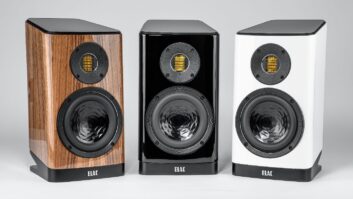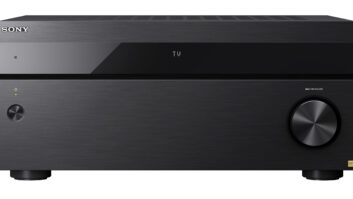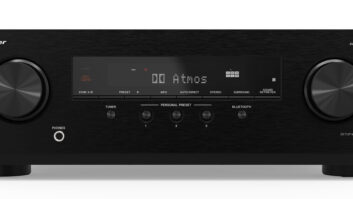When Valens introduced the HDBaseT technology in June 2010 and formed the HDBaseT Alliance with LG, Samsung and Sony Pictures, the first priority was to raise awareness of the technology within the Pro AV market and achieve widespread adoption. While that work will always be ongoing, we have made significant progress, including adding dozens of Pro-AV and consumer electronics companies to the Alliance.
This unique combination of members companies with professional and CE expertise enabled us two years ago to take up the challenge of bringing the benefits and experience HDBaseT offers professionals to the Consumer Electronics market. We had to figure out how to provide the single-cable benefits of HDBaseT, including high performance, enabling long cabling distances, multi-room support, reliability and support of legacy devices, to the CE market while working within constraints including affordability, ensuring connecting components is “plug-and-play” simple and that components are elegant, scalable and future-proof. Today marks the culmination of that work with the release of HDBaseT specification 2.0 and what we call “HDBaseT HomePlay.”
HDBaseT has become the digital connectivity standard for the Pro-AV and CEDIA markets. Millions of ports are deployed, hundreds of HDBaseT-enabled products are available, and the HDBaseT Alliance membership has grown to over 65 manufacturers, including brands consumers should immediately recognize like Samsung, LG, Sony Pictures, Pioneer, Onkyo and Epson.
Why do we believe that HDBaseT HomePlay will succeed where other technologies have failed? I refer again to the mix of Pro-AV and CE Alliance members that can provide their knowledge and guidance on how to meet the ever evolving needs of both professionals and consumers. For instance, their guidance had led to HDBaseT HomePlay including adaptations across all seven layers of the Generic communication OSI 7 model to allow the support of time-sensitive, high throughput video/audio and other time sensitive applications.
While HDBaseT 1.0 addresses the Physical and Data Link layers only, HDBaseT 2.0 adds networking, switching and control point capabilities. HDBaseT 1.0 defined a point-to-point connectivity standard, HDBaseT 2.0 defines point-to-multi point connectivity, thereby providing multi-stream support.
HDBaseT HomePlay defines the required adaptations across all layers of the Generic OSI model, in order to provide the optimized service for high throughput video and audio
HDBaseT 1.0 was defined to support the transmission of “video, audio, Ethernet, power and controls, what we refer to as the “5Play” feature set. Spec 2.0 establishes a specification that will allow HDBaseT HomePlay switches to control and distribute multimedia throughout consumers’ homes.
With an HDBaseT 2.0 switch, HDBaseT packets are switched and the conversion back to their native interfaces is done only once at the end device. The combination of this single switching function and the lack of unnecessary native signal terminations reduce the cost of an HDBaseT switch, and simplifies the implementation. This enables manufacturers to remove multiple interfaces and conversion components that existed in HDBaseT 1.0 products. The result is a smaller and less expensive switch. An HDBaseT 2.0 switch is ideal for delivering time sensitive application such as video, audio and USB, providing all required services for a multimedia home.
Making HDBaseT affordable for consumers is critical, and HDBaseT 2.0 specification will enable vendors to produce switches with a consumer-friendly price tag. This lower cost does not sacrifice simplicity or elegance. The ability to use one inexpensive cable to transmit video, audio, Internet, power and controls to connect AV components to displays eliminates cabling distance concerns, the limiting location of power outlets, Wi-Fi dead spots, and the messy clutter of cables and power bricks that mar the design and look of the home entertainment system. A consumer can hide components in a closet or basement and connect them to every display in the house. As running CAT cable throughout the house is becoming more and more common with the construction of new homes, that job is even easier and less time-consuming for the professional installer.
This focus on making HDBaseT more accessible to consumers does not mean the HDBaseT Alliance is reducing its commitment to the professional communities. HDBaseT 2.0 represents the culmination of more than two years of development work by both Pro-AV and CE manufacturers, and it offers significant benefits to the pro-AV companies such as native USB2.0 and additional features to improve performance margin including for 4K video and optimize the existing infrastructure and bandwidth.

The HDBaseT 2.0 specification is backward-compatible, so an HDBaseT switch based on the new 2.0 specification will work with HDBaseT 1.0 end devices, such as the new AVRs Onkyo and Pioneer unveiled earlier this year.
The HDBaseT Alliance will demonstrate HDBaseT 2.0 at CEDIA 2013 in late September; we look forward to seeing you there if you’re planning on making the trip to Denver.

Micha Risling is the HDBaseT Alliance marketing chair and a Valens Semiconductor representative; he brings 16 years of expertise in marketing and R&D executive roles in established NASDAQ and startup companies, plus vast experience in the global mobile and telecommunications industry. Micha received an executive MBA from the Kellogg School of Business through Northwestern University in Chicago. He also holds a bachelor’s degree in electrical engineering from Tel Aviv University.







